If two soaps bubbles of equal radii r coalesce then the radius of curvature of interface between two bubble will be
1. r
2. 0
3. infinity
4.
A cylinrical vessel is filled with a liquid up to a height H. A small hole is made in the vessel at a distance y below the liquid surface as shown in figure. The liquid emerging from the hole strike the ground at distance x
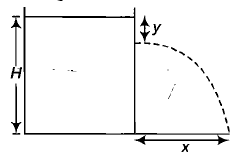
1. x is equal if hole is at depth y or H-y
2. x is maximum for y=
3. Both (1.) and (2) are correct
4. Both (1.) and (2.) are wrong
Water from a tap emerges vertically down with an initial speed of 10. The cross-sectional area of tap is . Assume that the pressure is constant throughout the stream of water, and that the flow is steady. The cross sectional area of the stream 0.15 m below the tap is
1.
2.
3.
4.
A solid uniform ball of volume V floats on the interface of two immiscible liquids (Fig.) The specific gravity of the upper liquid is and that of lower one is whilst the specific gravity of ball is . The fraction of the volume of the ball in the upper liquid is
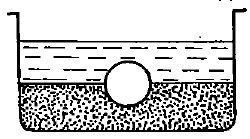
1.
2.
3.
4.
A metal sphere connected by a string is dipped in a liquid of density as shown in figure. The pressure at the bottom of the vessel will be, (atmospheric pressure)
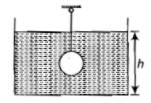
1. p=
2.
3.
4.
Two soap bubbles of radii equal to 4 am and 5 sm are touching each other over a common surface (shown in figure). Its radius will be 
1. 4 cm
2. 20 cm
3. 5 cm
4. 4.5 cm
A piece of ice is floating in a beaker containing water when ice melts the temperature falls from 20C to 4C, level of water
1. remains uncharged
2. falls
3. rises
4. changes erratically
The work done in blowing a bubble of radius is W, then the work done in making a bubble of radius 2R from that solution is
1.
2. 2W
3. 4W
4.
When the system shown in the adjoining figure is in equilibrium and if the areas of cross section of the smaller piston and bigger piston are a and 10 a mass on smaller and bigger pistons are m amd M, then
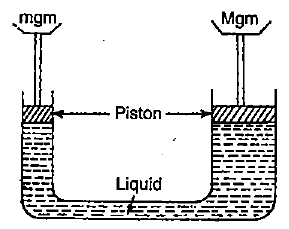
1. m=M
2. m= 10M
3. M= 10 m
4. M= 100 m
A wooden block, with a coin placed on its top, floats in water as shown in fig. the distance l and h are shown there. After some time the coin falls into the water. Then
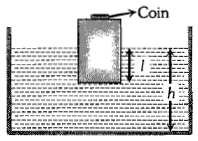
1. l decreases and h increases
2. l increases and h decreases
3. Both l and h increase
4. Both l and h decrease






